The former is a popular street tree in Perth.
Generally known as a “Cape Lilac”, it is in fact originally from the Himalayan region.
The latter is an endemic local – a magnificent, endangered bird.
Calyptorhynchus banksii naso – the Forest Red-tailed black cockatoo – is the uniquely southwest Australian sub-species of the Red-tailed black cockatoo.
An earlier post tells the story of the surprising, only recently-made connection between lilac and red-tail, which may prove pivotal to the bird’s survival prospects.
This post simply celebrates a marvellous bird.
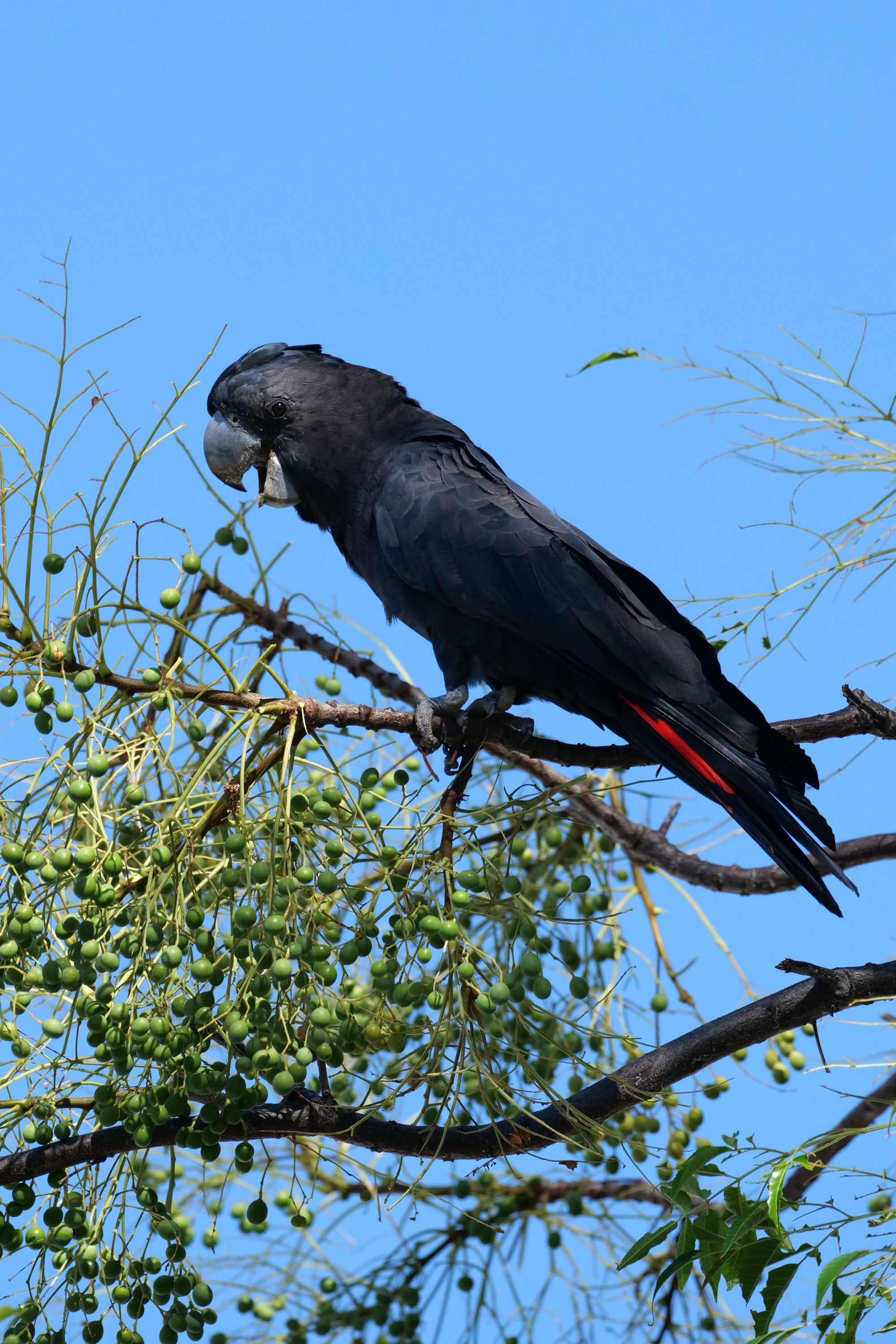
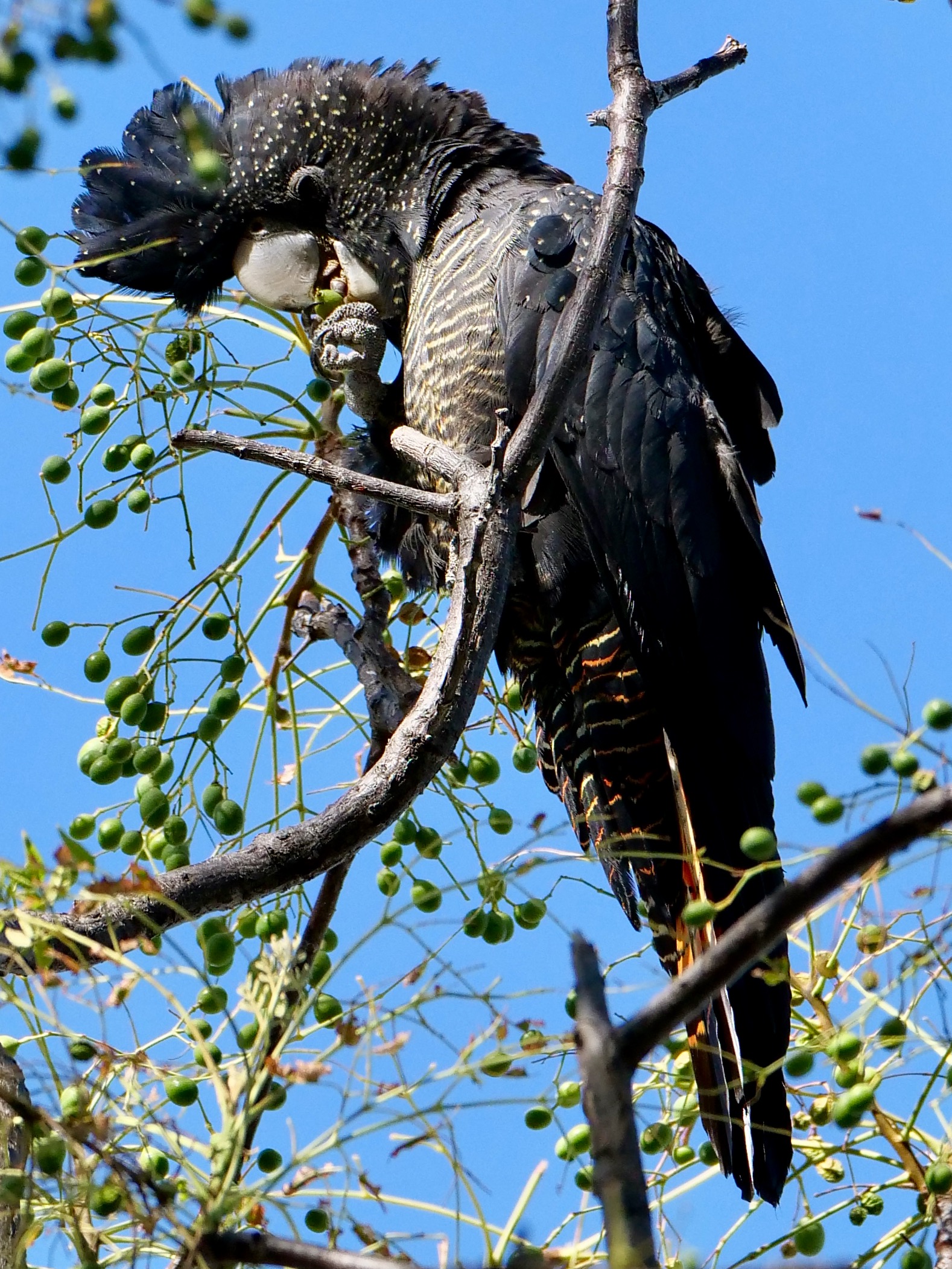
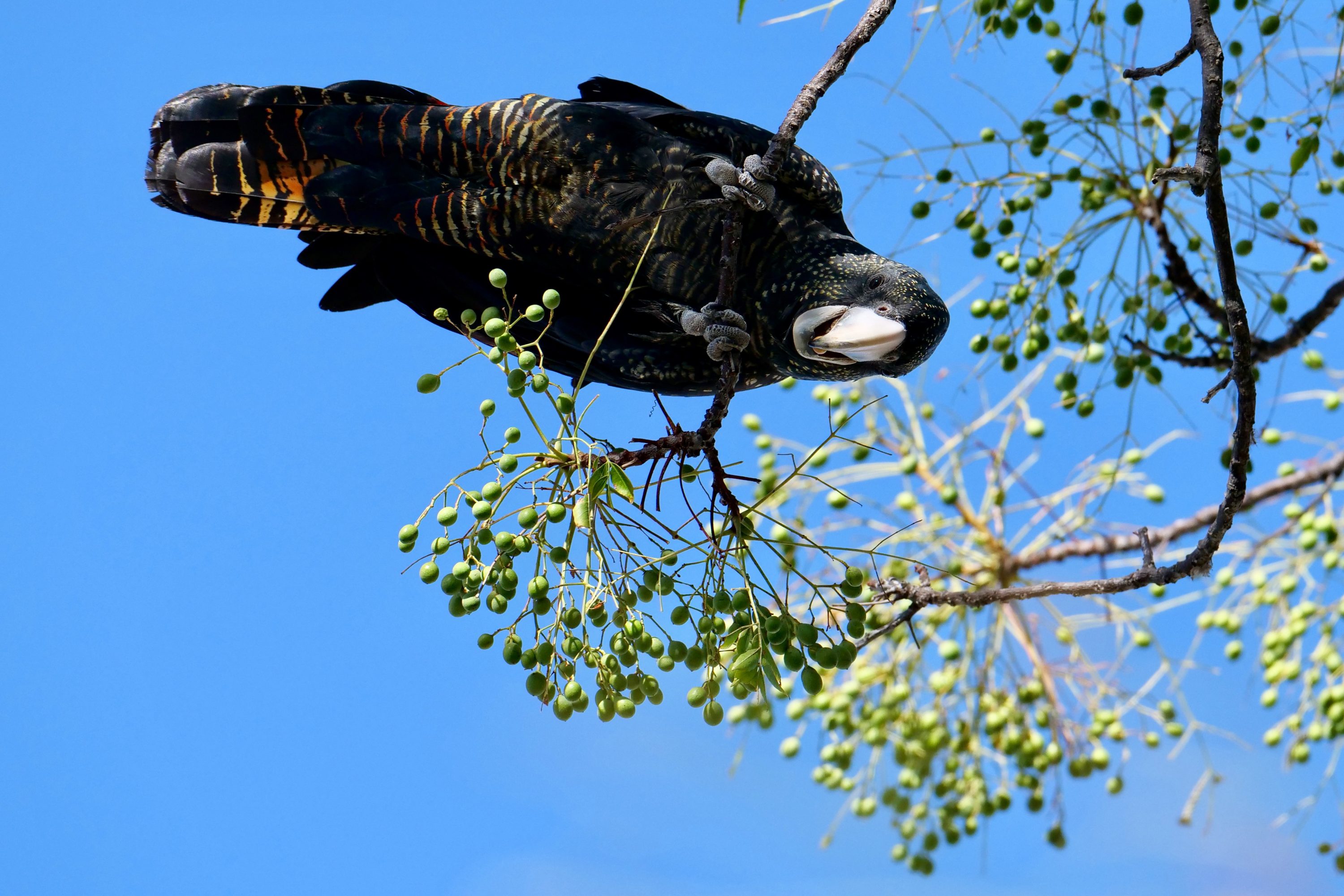
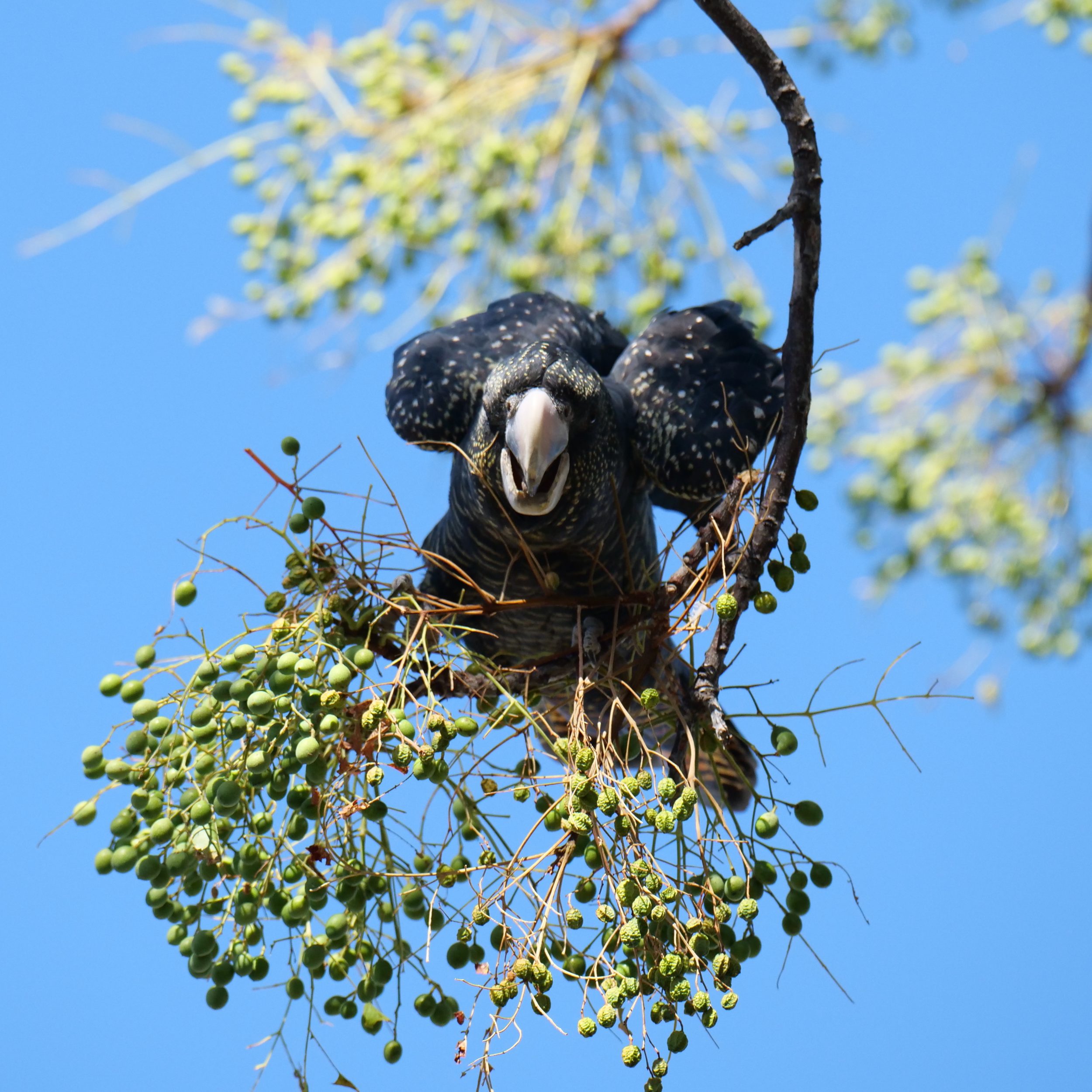
(all photographs copyright Doug Spencer, taken over the last several days in West Leederville’s streets and lanes – just minutes away from Perth’s CBD)
After a few days worth of cockatoo “attack”, the ground below is often more generously green-leafed than is the tree above!
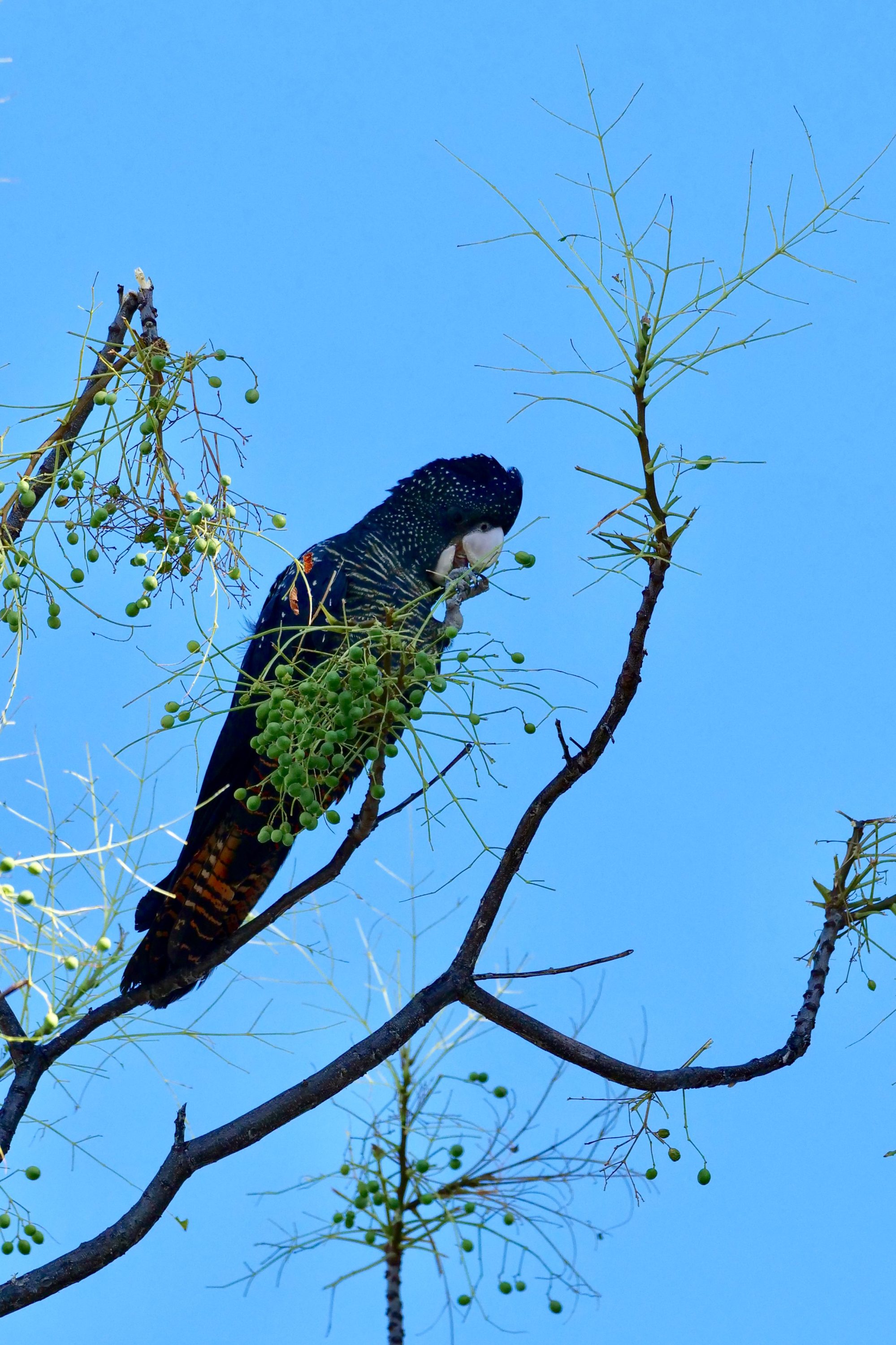
The “devastated” trees soon recover.
The red-tails’ calls are prodigiously loud, but infrequent.
Their demeanour is generally peaceable.
If you observe corellas or lorikeets “in action”, their cacophony is oft-relentless, and much of their behaviour is disputatious.
As they wheel and roar overhead, before settling on a tree, and then “trashing” it, red-tails apparently resemble a winged bikie gang.
However, if you stand below that tree – as a whole lot of shredding goes on and debris rains down on and around you – you will almost certainly notice that none of the feeding red-tails are directing any aggression to their fellows, nor to you.
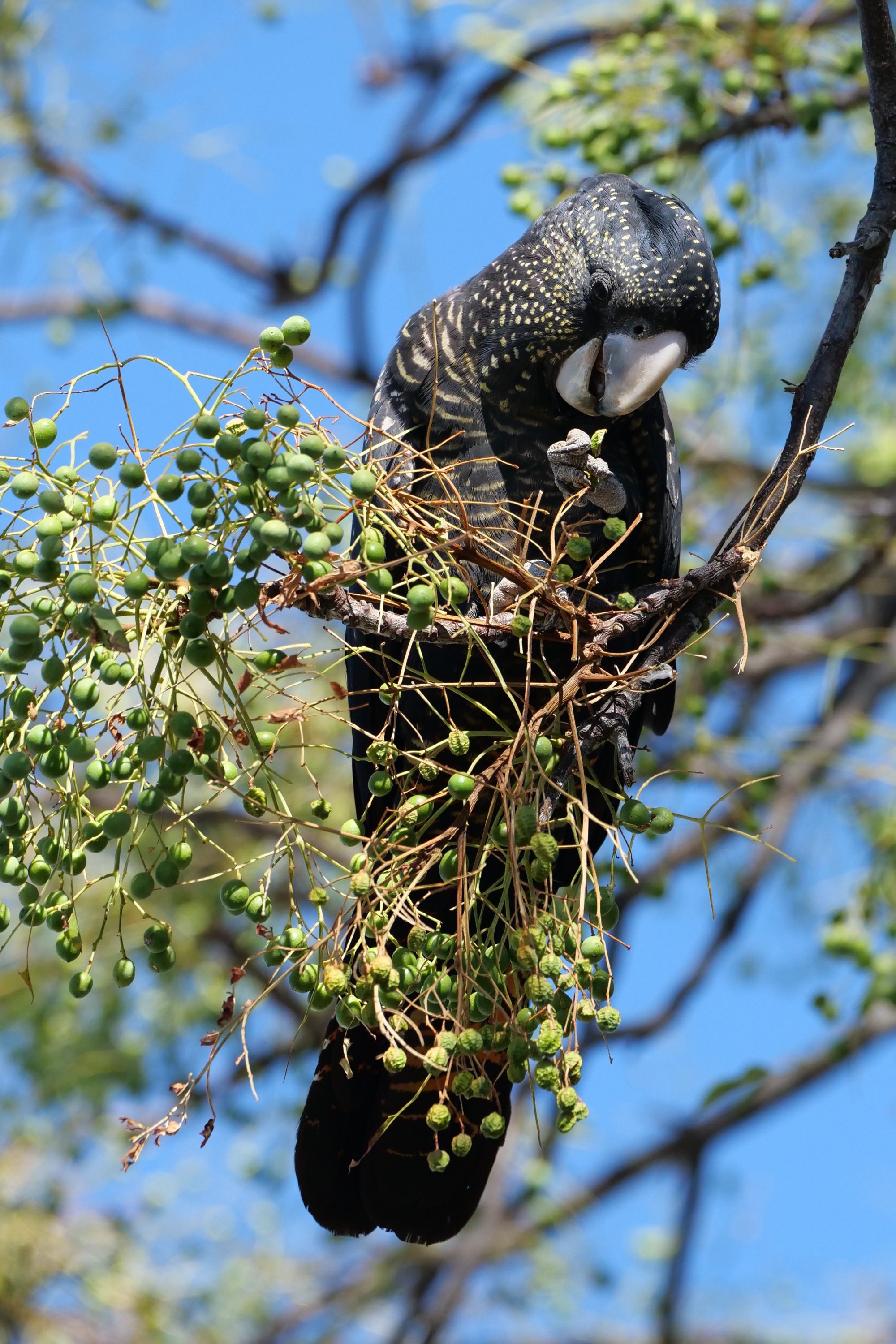
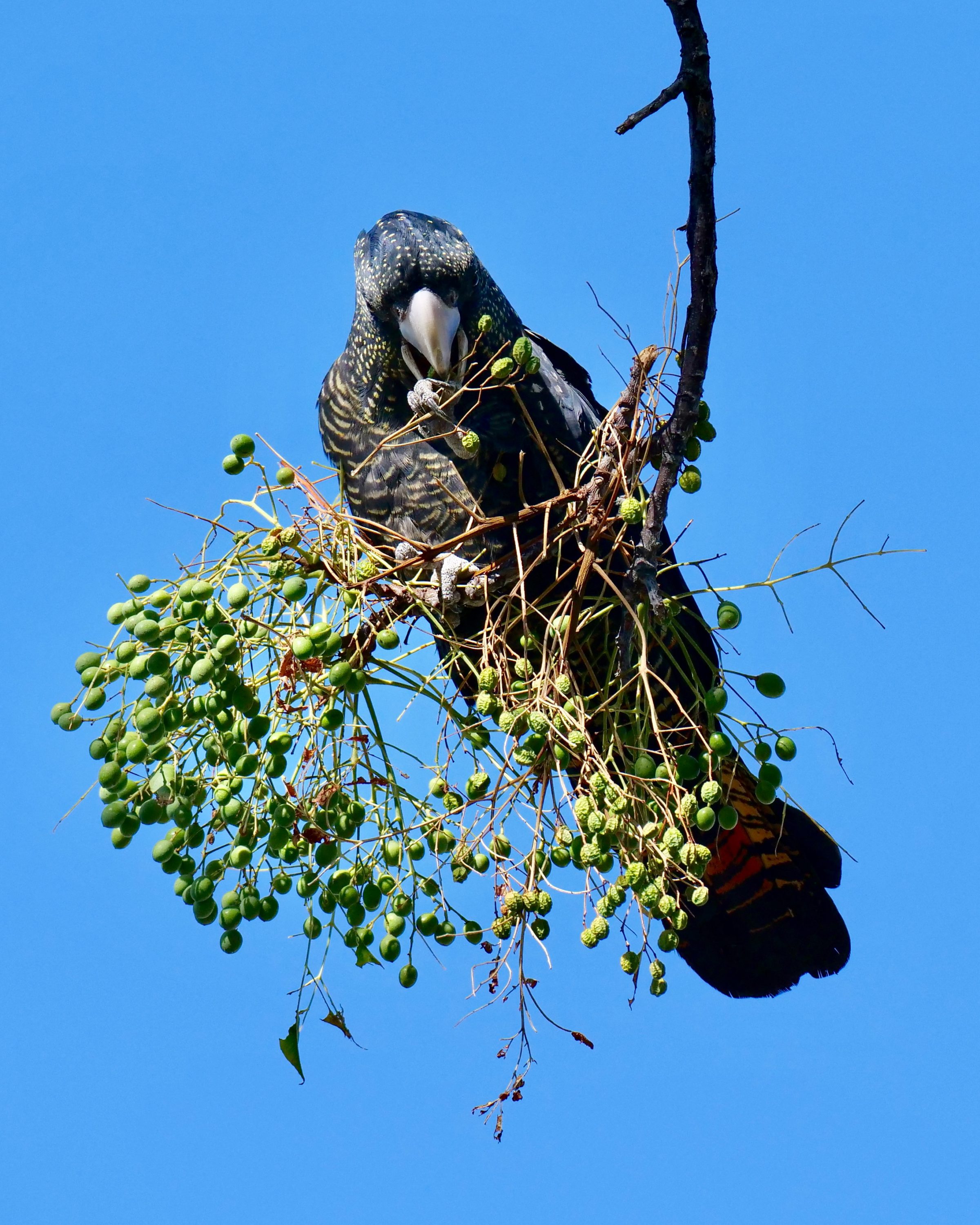
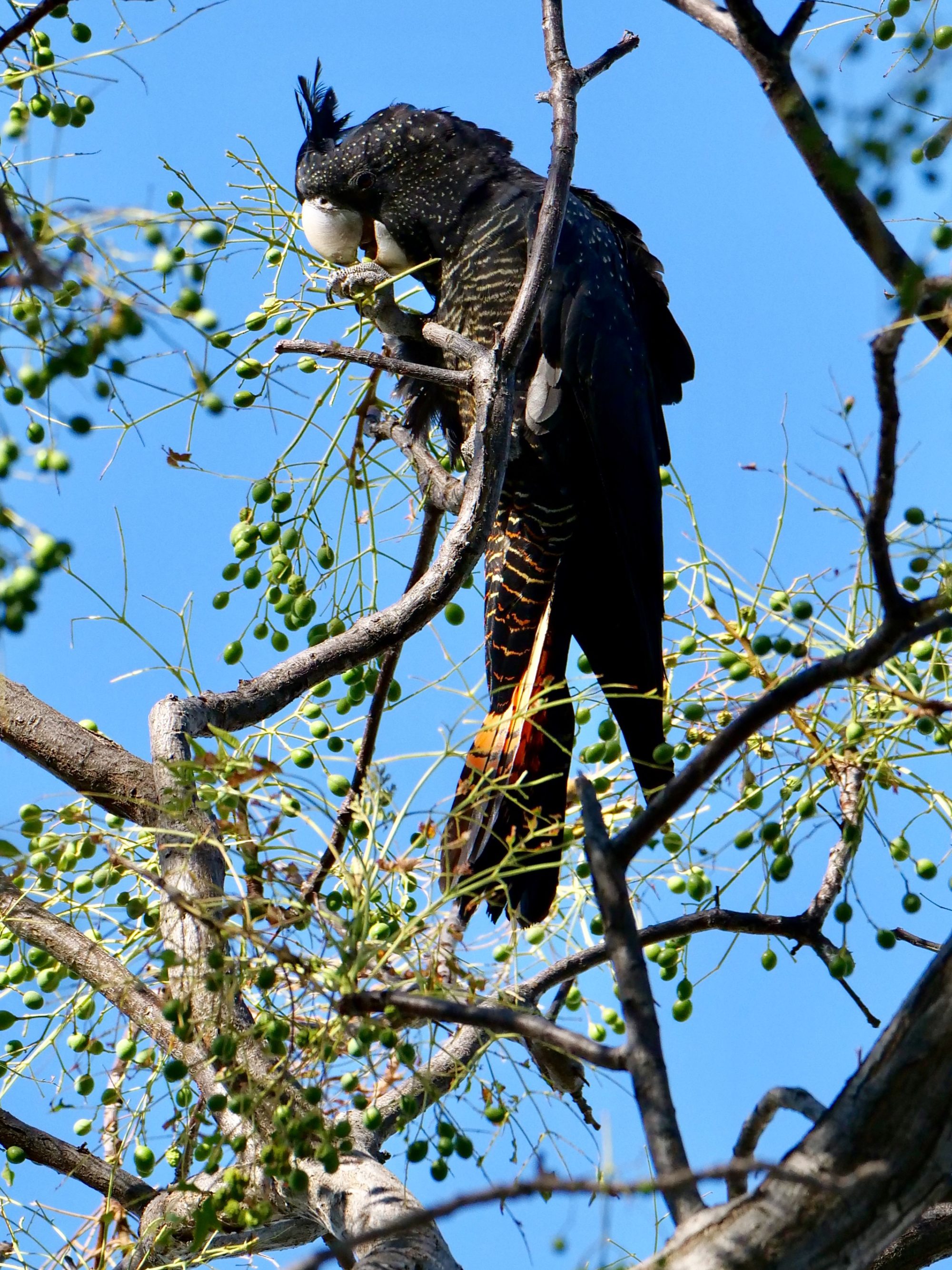
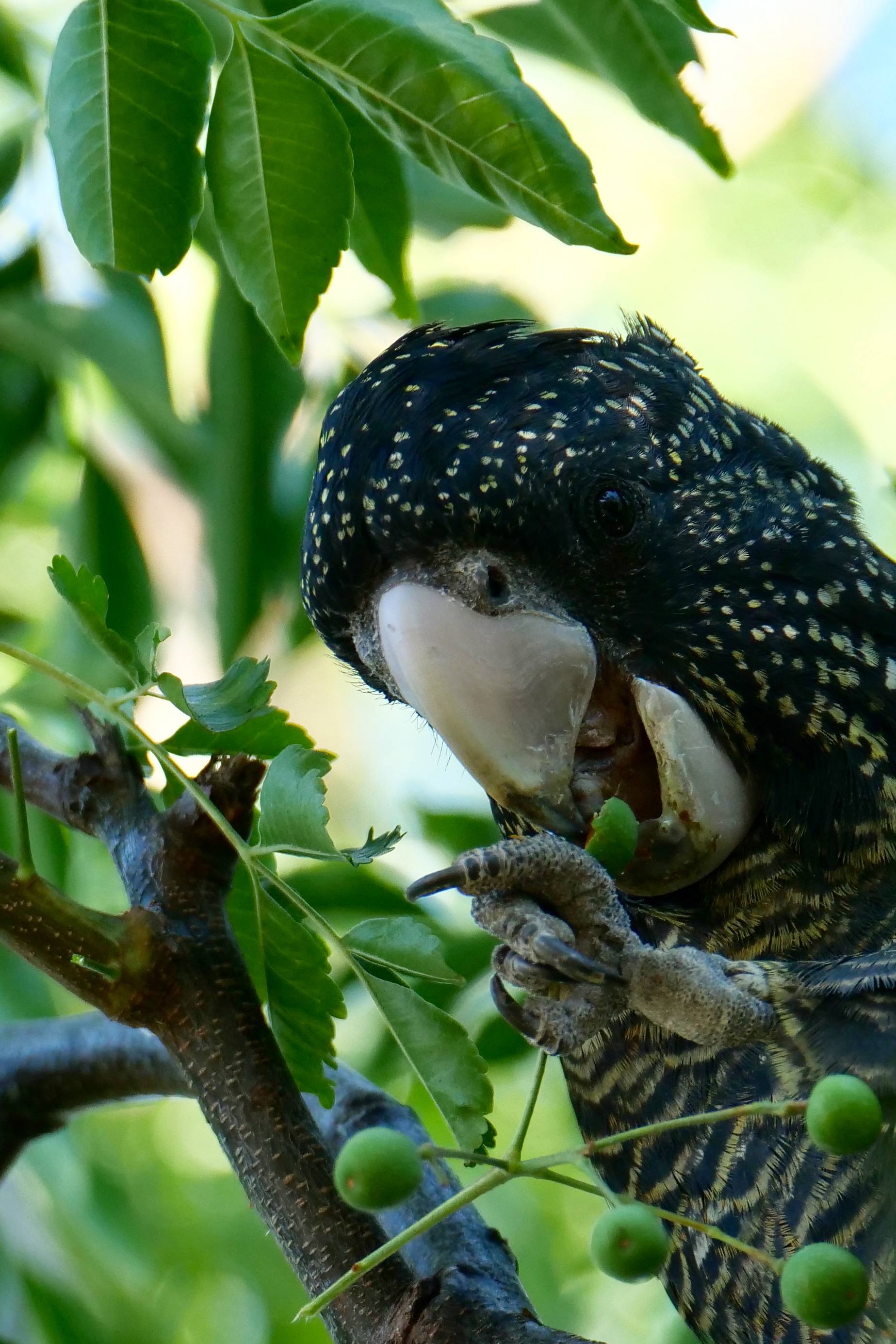
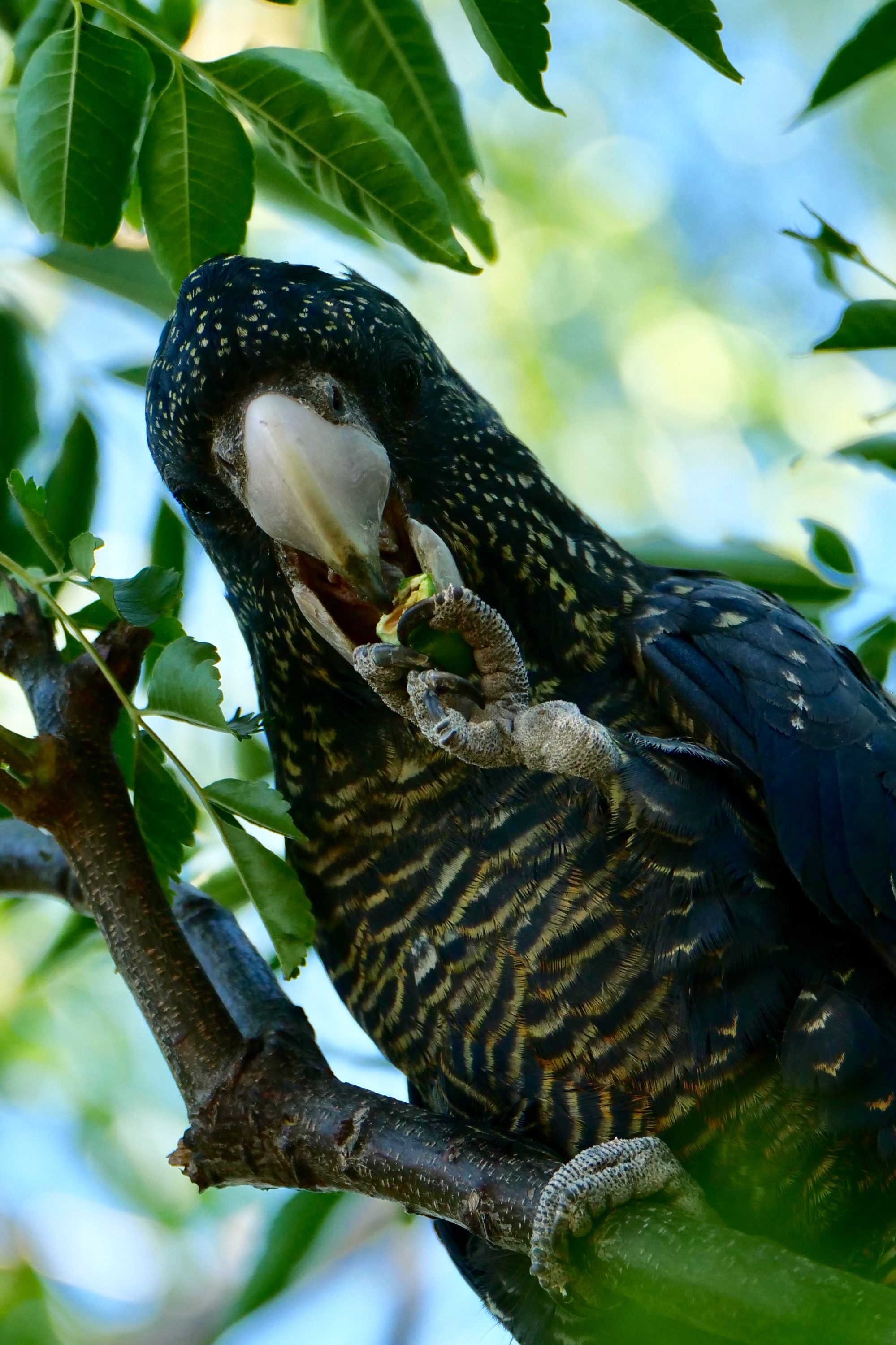
The final photo shows the same (female) individual as does this post’s featured image.
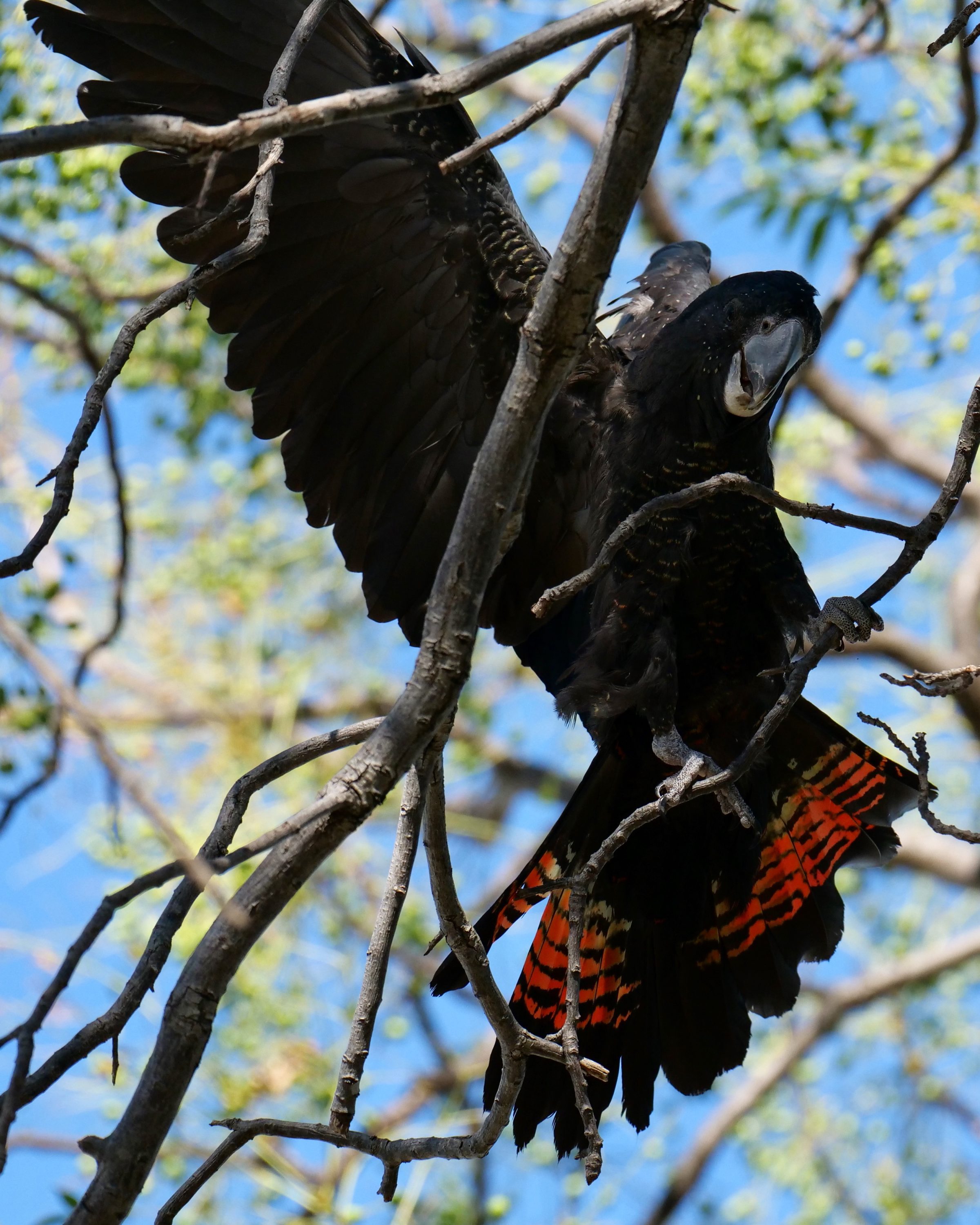
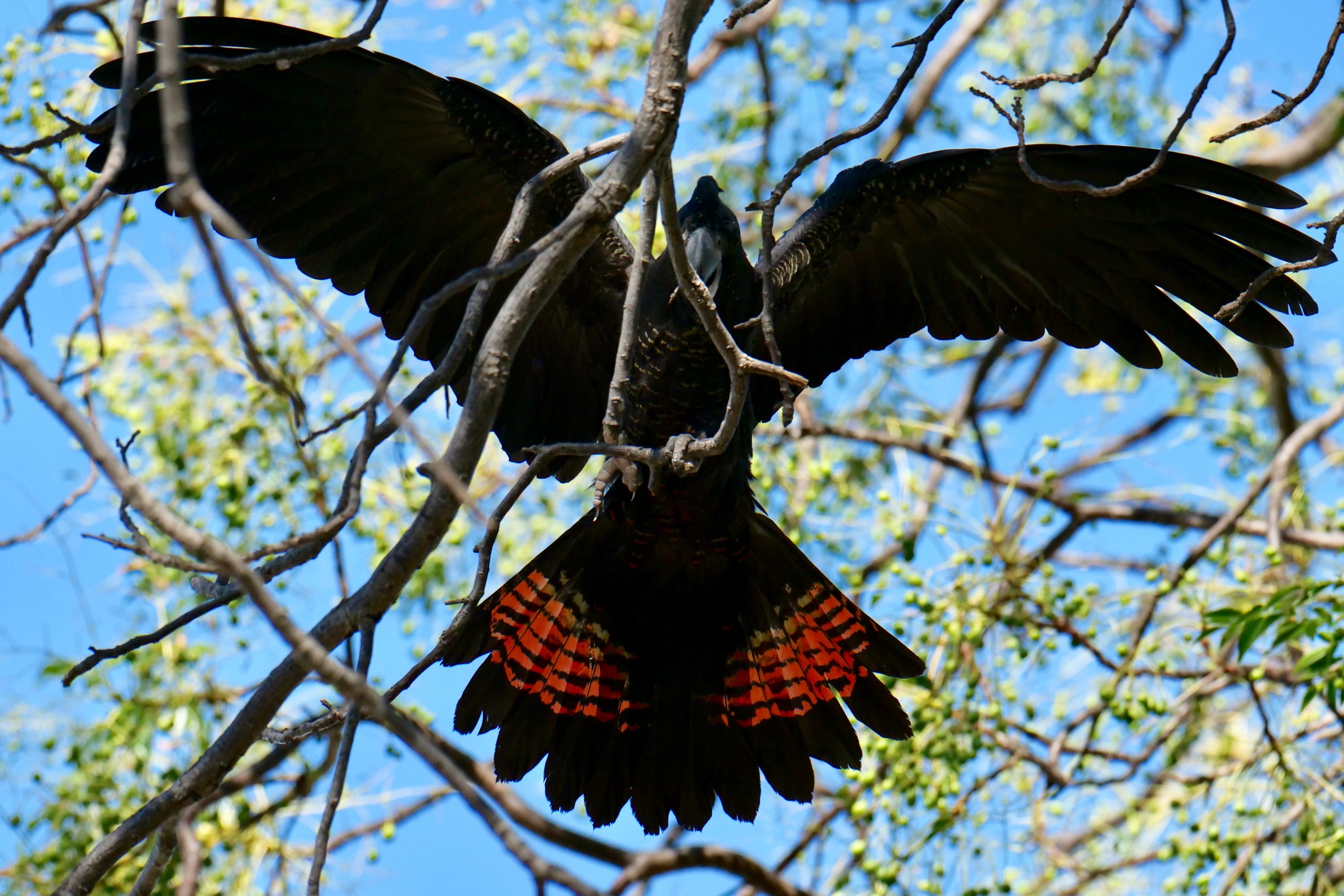
They really are such beautiful birds! Thanks for the photos!